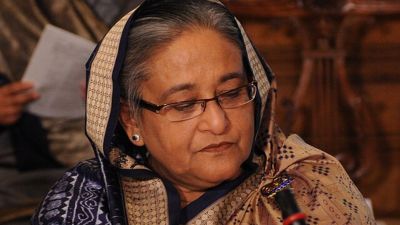Hear me roar
Last week, the world celebrated women's day. An appropriate occasion to assess women on TV. No, not a 36-28-36 statistical study or an analy...

Last week, the world celebrated women’s day. An appropriate occasion to assess women on TV. No, not a 36-28-36 statistical study or an analysis of the portrayal of women on the tube. Both of which would require more than 750 words. Instead, let’s look at some attempts to portray women differently and not as dysfunctional, domineering or devious (so often the case in many drama serials).
Fittingly, Sony commenced its newest serial on Women’s Day, Bhanwar with a docu-dramatisation of a woman’s story (see: A Brief history of crime). The subject was dowry death. Sushma Seth plays the strong-willed matriarch who is determined to bring her daughter’s husband and mother-in-law to book for her murder. Through a series of courtroom scenes, black and white flashbacks of the crime and a recitation of events, we go from her little victories to her big defeats as the courts reject her lawyer’s case. Just when it appears that all is lost (the husband is happily remarried), Seth stumbles upon the vital, conclusiveclue that, finally, brings her justice.
Seth in the main role is strained and restrained as the agonised avenging goddess and the actress who played her lawyer (didn’t catch the name) is passionate in her commitment. So are the actor/actress who play the husband and mother-in-law. The way they play it, you really want them to burn in hell.
The producers might be trying to exploit life for fictional success but surely we gain too. It is sort of salutary to see such tragedies, to vicariously experience them, to realise their horror, to know that crime doesn’t always pay and that the law, is, occasionally on our side. So the next time there is a dowry death or a rape, people may come forward and fight.
On Monday, late night DD2, there was the story of a father and daughter team of doctors. They’re a great example to all fathers and daughters, so loving and giving you cannot believe it (so don’t because it is only a story). On the morning of his birthday, Aparajita (for that is the daughter’s name) wakeshim up with the strains of “Happy Birthday..” on her sitar. Ugh! Anyway, to get back to the main theme, there is this here guy in hospital, a sort of VIP social slick whom the father and daughter both sort-of-treat (sort-of because we never really see any treatment, just a few white coats and stethoscopes).
Returning to the serial after a short circuit through other channels, it was discovered that Aparajita was about to be engaged or married to this Indian patient. Just as she adjusts the flowers in her hair in a bedroom in his house (why his house?), she has the bad manners to eavesdrop on a telephone conversation between the man and a woman. The latter happens to be Kalpana his run-away wife, who now wants to wander back into his life. Aparajita gently replaces the phone, removes her jewels and exits. Now comes the positive bit which makes up for all the inadequacies of the earlier parts: she exhorts her prospective ma-in-law to forgive Kalpana and accept her as her daughter-in-law. Then she sails outon her father’s arm. Yahoo for the sisterhood of women!
So to Pahal (DD1). A series on famous, significant Indian women. Documentary style. Presented by Tabussum. Last week, it was the turn of the first Indian female graduates, Kadambari and Chandramukhi. The account of their educational odyssey is traced by Dr.Malavika Karlekar and Mrinalini Dasgupta. There are some lovely shots of the Hooghly river (in case you hadn’t guessed where the girls belonged) and neck-cricking ones of Bethune School. There are two old photographs of the two girls but only two.
Couldn’t the producer find any others? There must be some of Kadambari — who went on to become a doctor and was even doctor to the Queen of Nepal — and her eight kids (so much for literacy reducing fertility!). Pahal situates the two women in the context of the end of the last century.
The producers have a little moral lesson tagged on for this century: 100 years on, female illiteracy is alive and flourishing in India. Meanwhile, three end of thecentury women, Sonia Gandhi, Jayalalitha and Mamata Bannerjee have become regular box-items, given the frequency of their television appearances. What are they like on TV? Well, truth be told, Sonia looks better than she speaks; Jayalalitha speaks better than her actions look and Mamata looks and speaks equally well or badly.




- 01
- 02
- 03
- 04
- 05



























